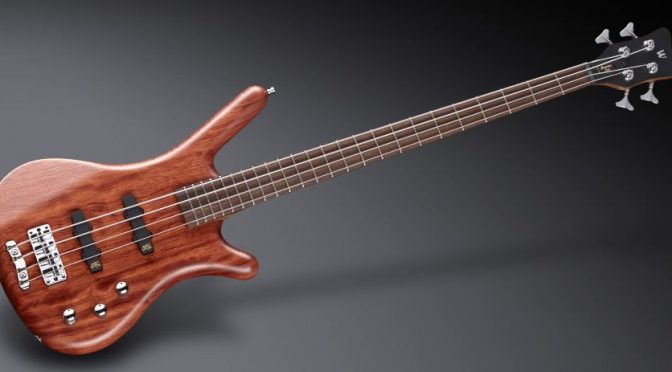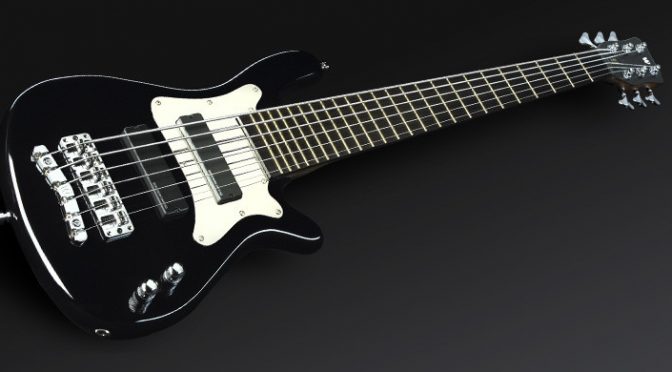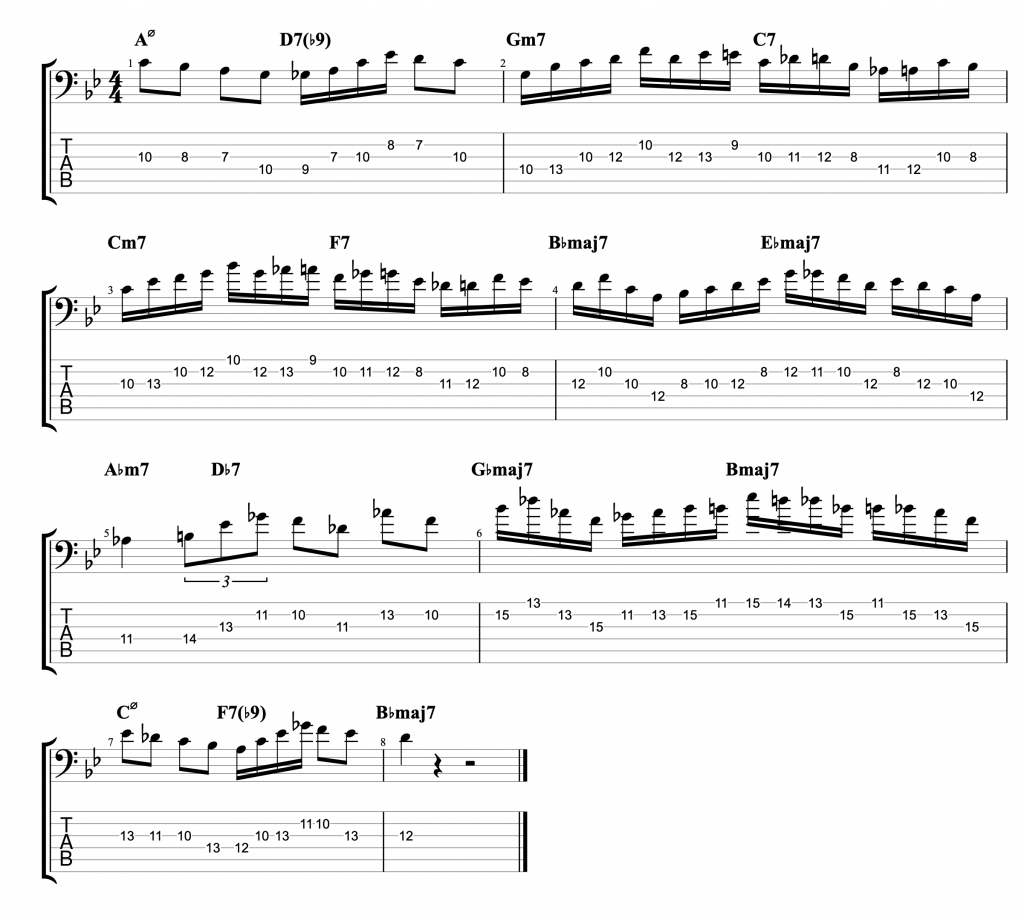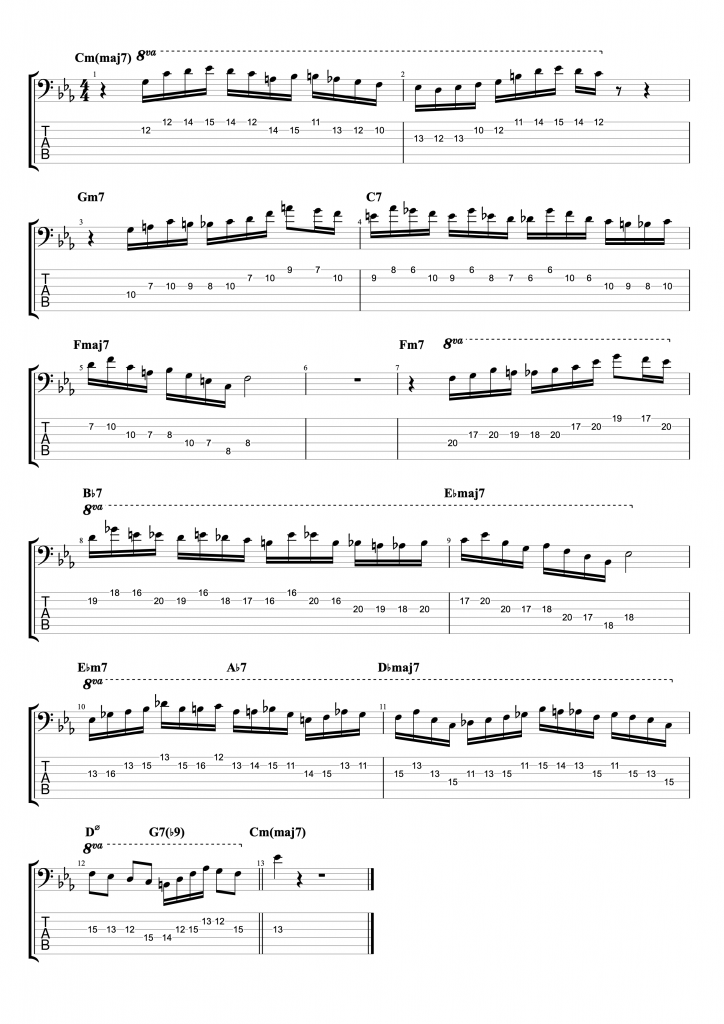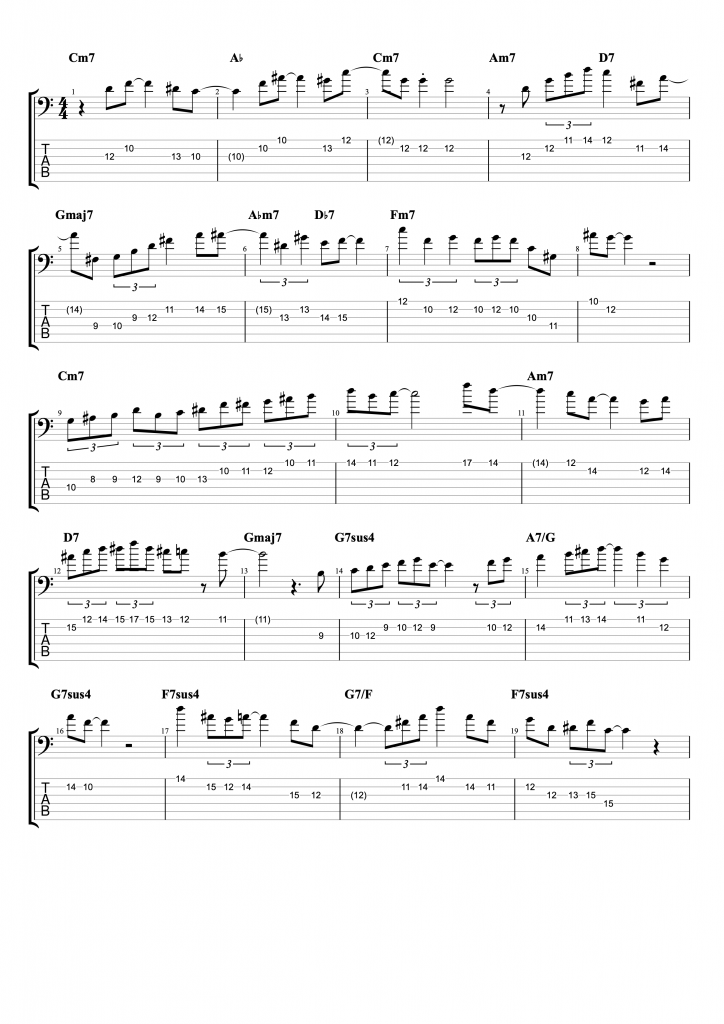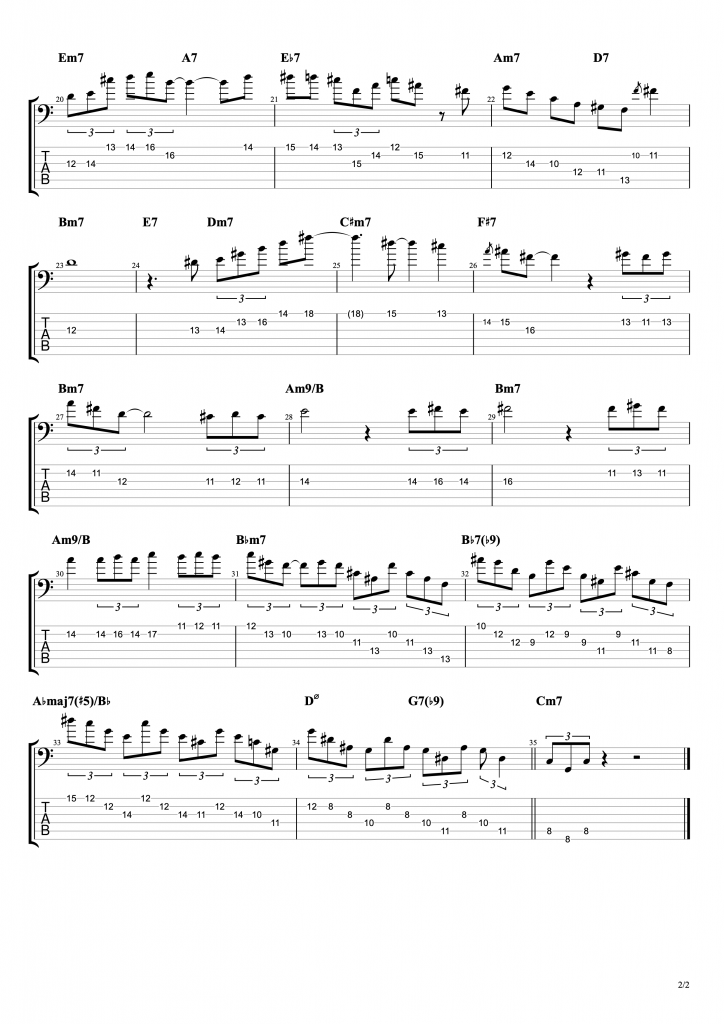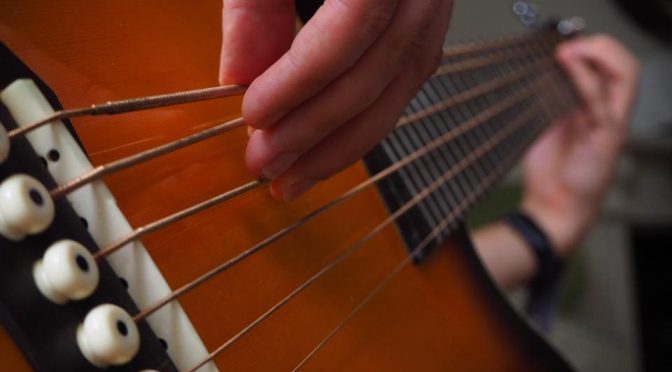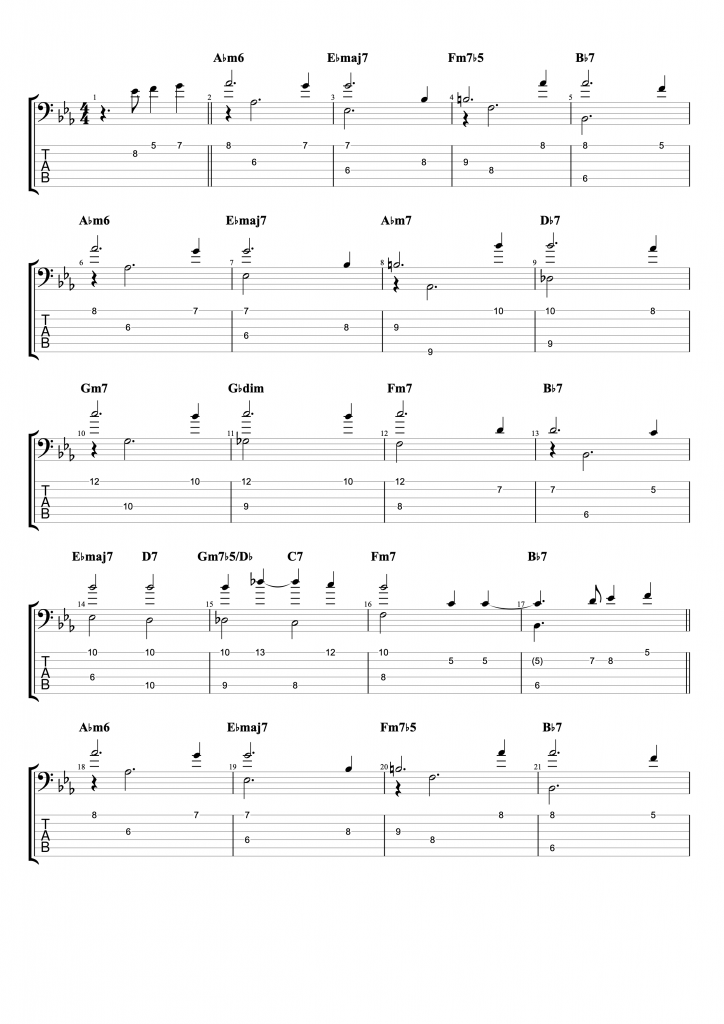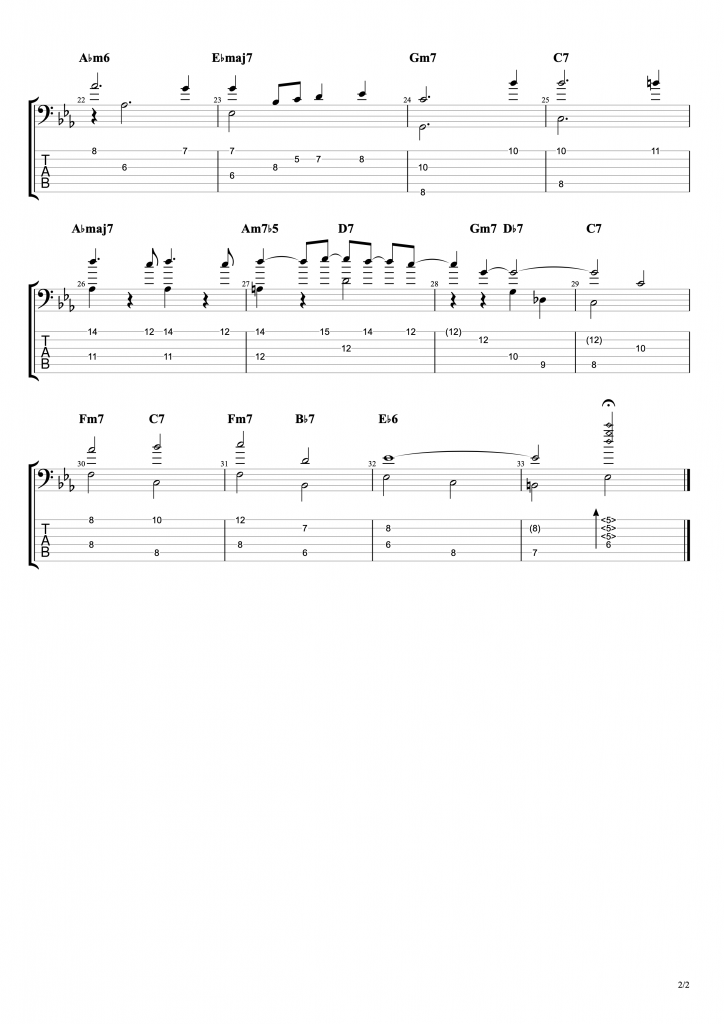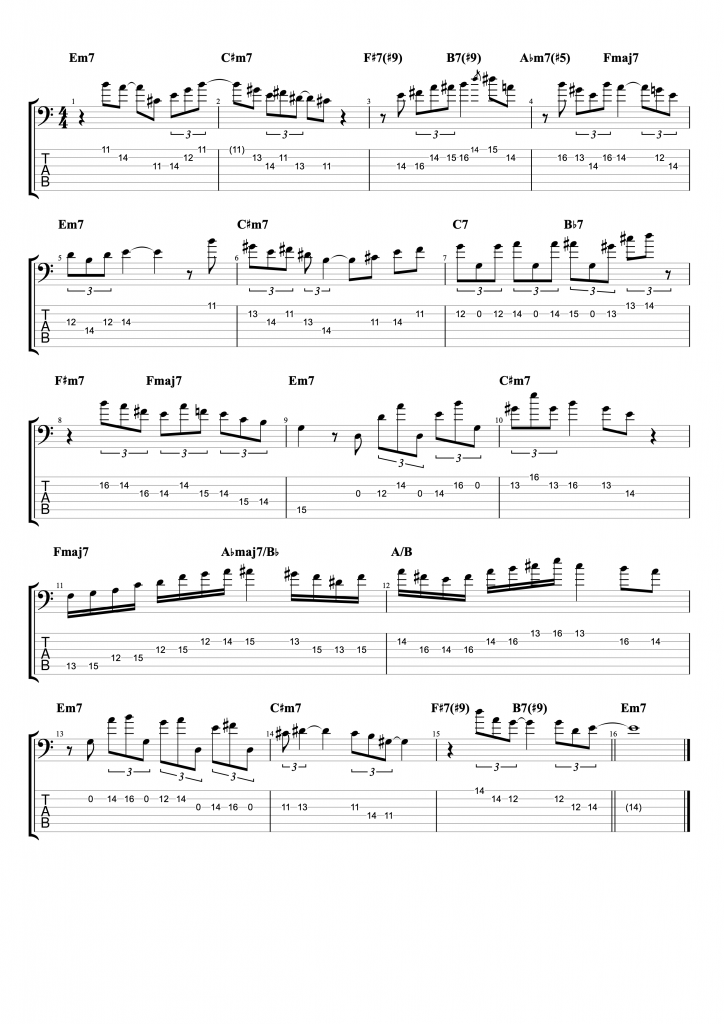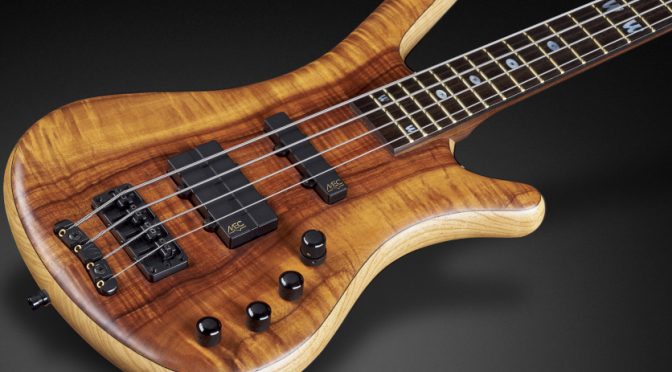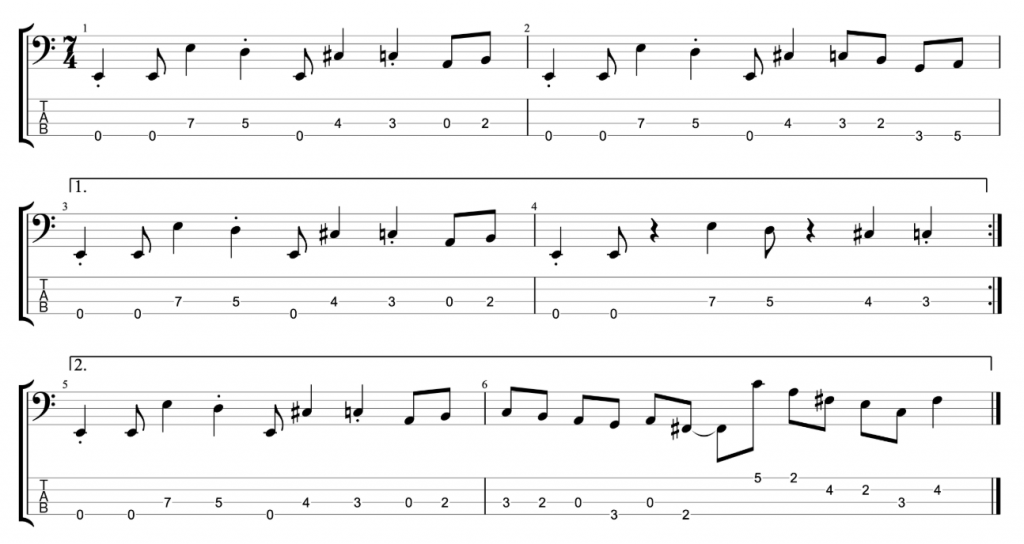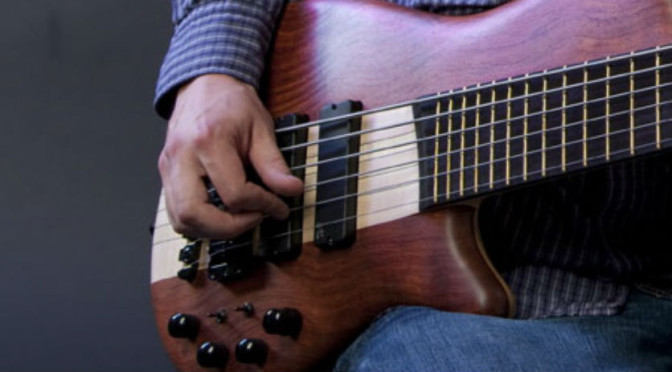Johnny Cox and Tim Pettingale playing Tim’s Jazz Waltz – Bass Practice Diary – 17th September 2019
A couple of weeks ago Tim Pettingale came over to visit me in my new studio. And we had a bit of a play over this idea that Tim had for a jazz waltz. I previously released another video from this session of us playing over Rhythm Changes. Tim is the author of two brilliant jazz guitar books Jazz Bebop Blues Guitar and Rhythm Changes for Jazz Guitar.
Jazz Waltz and Variations
A jazz waltz is something that I don’t practice that often. So it was really interesting when Tim came to me with this idea for an original composition. He wrote it in three sections, A, B and C, which gave us some scope to come up with some interesting rhythmic variations. On the B and C sections.
The A section is the main melody, which we played with a standard jazz waltz feel. I initially played it on my fretless bass and then Tim played it on guitar after that.
A jazz waltz is written in 3/4 but it’s probably more accurate to call it 9/8. Because you have three beats in each bar and each beat is subdivided into triplets. Which is what gives you a swing feel. So there are effectively nine 1/8th notes in each bar, hence 9/8. It’s useful to understand this because it means that you can superimpose grooves in 9/8 onto a jazz waltz without needing to change the beat or sub-division. That’s exactly what we did in the bass solo which is the C section of the composition and starts at 1:41 in the video.
A simpler approach to playing 3/4 is to play using straight 1/8th notes. Which creates six 1/8th notes in each bar instead of nine. So, a straight 3/4 can also be thought of as being interchangeable with 6/8. This is the feel that we explored in the B section which starts at 0:58 in the video. I’ve explored many of these same rhythmic ideas in my upcoming book for Fundamental Changes which I hope will be released before the end of this year.


